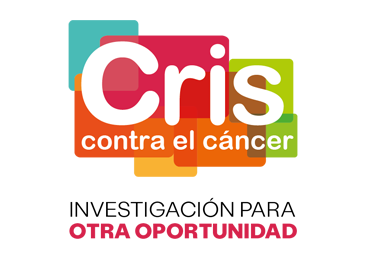
In our collective efforts to solve cancer sooner, tumor diversity represents one of the major challenges in more effectively targeting the specificities of individual cancers. Much progress has however been made in more precisely defining biomarkers of response to anti-cancer therapies which has subsequently led to the approval of 10 new agents over the last two years in non-randomized trials. Cancer medicines are thus becoming increasingly personalized as clinical research is spurred through important multi-center, international partnerships that hone in on and target the characterized molecular features of each tumor.
In addition to today’s powerful array of novel diagnostic tools and approaches, there are two other main reasons why the more precise matching of anti-cancer therapies to individual patients is starting to happen in practice. First, large-scale genomic sequencing consortia and cutting-edge platforms have facilitated the unmasking of cancer driver genes. Second, drug discovery has centered on identifying druggable aberrant proteins that orchestrate tumor growth.
The applicability of better tailoring anti-cancer treatments to individual patients is however largely confined to patients harboring these identified alterations. Therefore, the clinical validation of the efficacy of novel therapies against cancer increasingly relies on multi-center studies that expand sample size and help to refine response biomarkers.
An open access article recently published in Molecular Oncology*and co-authored by Elena Garralda, Principal Investigator of our Early Clinical Drug Development Group and Director of our Research Unit for Molecular Therapy of Cancer (UITM) – “la Caixa”; Rodrigo Dienstmann, Principal Investigator, VHIO’s Oncology Data Science (ODysSey) Group; Alex Piris, Head of VHIO’s Scientific Coordination Area; Irene Braña, Phase I Clinical Investigator of Elena’s Group, Jordi Rodón, MD Anderson Cancer Center, Houston, USA, (also Associate Investigator, UITM), and corresponding author, VHIO’s Director, Josep Tabernero, provides a rigorous and balanced review of the opportunities and challenges of novel clinical trial design set firmly within the context of precision medicine in oncology.
Clinical trial design is evolving from a fixed model, from phase 1 safety analysis to phase 2 initial study of efficacy, to adaptive strategies that tweak the protocol to integrate new insights gained throughout the course of the trial. This more flexible approach, exemplified by the recent BATTLE-2 trial discussed in this present review, allows for changes in patient randomization, for example, to better gauge the optimal biomarkers signatures based on this knowledge accumulated in ‘real time’.
“New clinical adaptive trial design allows for modifications to the study protocol in order to integrate and apply accumulated findings as soon as possible and thus accelerate the drug development process. It is consequently easier to apply these ‘live’ insights and more precisely refine the eligibility criteria, adjust sample size and the proportion of randomization, as well as consider additional treatments,” observed lead author Elena Garralda.
Although regulatory agencies have approved the validity of this new approach, the potential bias and the heightened probability for false positive errors represent two current challenges. An additional concern is that, since these studies are, by definition, more flexible, they can be more complicated to explain to patients which is an important consideration in their development. As such, clarification of the possible pre-planned modifications is paramount.
The article also explores two other emerging approaches to clinical study design: umbrella trials that group patients with the same type of cancer and assign them to different arms of a study matching their mutations to specific treatments; and basket trials that include patients with different tumor types but a shared molecular alteration, who are treated with the same targeted therapy.
These trial types can allow more patients to participate, evaluate the efficacy of treatments more quickly, provide more opportunities for patients with rare mutations, facilitate biomarker identification as well as more tightly connect various stakeholders in oncology including clinicians, industry and regulatory agencies.
Certain umbrella trials, including the MOSCATO study, highlighted within the review, have had limited access to optimal therapies against the driver mutations identified. Continued and close collaborations with pharmaceutical companies should improve access to cutting edge medicines (e.g. I-SPY and NCI-MATCH studies), and accelerate clinical research and drug development.
With regards to Basket trials, the authors draw on a recent study that led to the simultaneous approval in adults and children of pembrolizumab or larotrectinib against tumors with specific genomic alterations. Importantly, traditional trial design would have delayed the marketing authorization for both groups of patients and required independent adult and pediatric testing.
Current challenges associated with basket design surround whether each mutation has the same impact in every organ or whether a biomarker has predictive or prognostic value when there is no control group. Avoiding false negatives in rare tumor types is also an issue. Multi-center collaborations that expand sample size and increase the representation of rarer diseases are expected to significantly advance basket design.
As an example of EU collaborative basket frameworks adopting a multi-modular design, the Basket-of-Baskets (BoB) two-part study, spearhead by VHIO’s clinical investigators of our Early Clinical Drug Development Group and Research Unit for Molecular Therapy of Cancer – “la Caixa”, co-led in collaboration with other partners of the Cancer Core Europe (CCE) consortium, will evaluate the antitumor activity of matched therapies in small patient populations. Molecularly-selected using a novel study design, these patients will be enrolled across the especially chosen clinical sites.
By advancing logistics of genomically-oriented clinical trials and successfully implementing its innovative research strategy, BoB is expected to make important progress in translating scientific discovery into real benefits for patients at the clinical level.
Commenting for VHIO Communications, Josep Tabernero, VHIO’s Director and corresponding author concluded, “Clinical research is continuously evolving in tune with omics-generated insights into tumor progression. Umbrella and Basket trials are showing promise in delivering on the true ethos of precision medicine in oncology. Only through continued international collaborations, however, will we realistically and more rapidly achieve our collective ambition of significantly improving outcomes for an increasing number of our patients.”
###
Reference:











